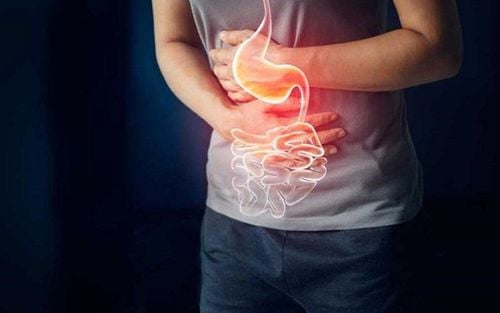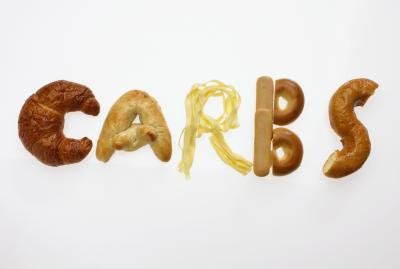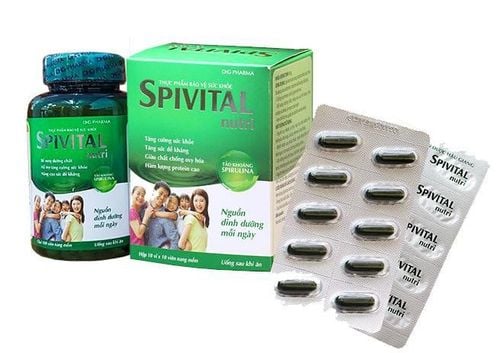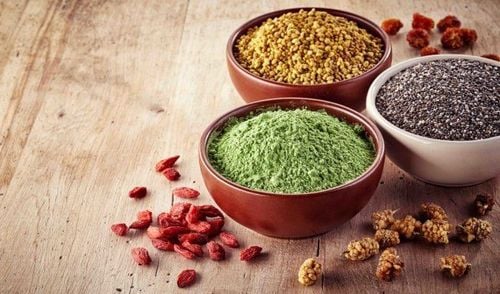This is an automatically translated article.
Clean eating, the method is not concerned with whether the food is clean or dirty, but simply involves choosing foods that are properly prepared, while providing maximum nutritional benefits. The more these foods are in their natural state, the more nutritional benefits they bring to the body.
1. What is Eat Clean?
Eat clean - Eating clean is essentially a diet that can help improve your health and well-being. Eating clean includes several key principles and sometimes also aligns with the fundamentals of healthy eating:
Eat more food. One of the tenets of the diet should be to eat more natural foods and less processed or refined foods. Eat to nourish. Eat regular, balanced meals and healthy, nutritious snacks. Eat at home more often and prepare food in a healthy way. Pack food to eat on the go, go to work...When you eat out, make healthy food choices Prioritize the use of foods rich in nutrients from plant . Fortify plants by eating more plant-based proteins, such as beans, lentils, and peas, and high-protein whole grains like quinoa, barley, and buckwheat. Healthy lifestyle. Adopt a cleaner lifestyle by getting plenty of physical activity during the day, getting enough sleep at night, and managing stress in healthy ways.
2. Ways to eat clean
2.1. Eat a lot of vegetables and fruits One of the undeniably clean ways of eating vegetables and fruits is very good for health. Fruits and vegetables are packed with fiber, vitamins, minerals, and plant compounds that help fight inflammation and protect your cells from damage. Many observational studies have linked a high intake of fruits and vegetables with a reduced risk of diseases such as cancer and heart disease.
Fresh vegetables and fruits are said to be ideal for clean eating, as most can be eaten raw immediately after picking and washing. What's more, you can choose organic produce that takes you a step further by reducing your exposure to pesticides and pesticides and potentially boosting your health.
2.2. Limit processed foods Processed foods are often not a smart choice for a clean diet because they have been modified from their natural state. Most processed food products have lost some fiber and nutrients but have added sugars, chemicals or other ingredients. Furthermore, processed foods may be a factor in inflammation and an increased risk of heart disease.
Even if unhealthy ingredients are not added to these food products, they still lack many of the benefits offered by whole foods. The clean eating approach includes avoiding processed foods as much as possible.

Để có thể ăn sạch, bạn nên hạn chế ăn thực phẩm chế biến sẵn
2.3. Read product labels before use Although eating clean is based on a raw food selection approach, some packaged foods may be included, such as canned vegetables, nuts, and seeds. canned meat. However, it's important to do a label reading to make sure there aren't any preservatives, added sugars, or unhealthy fats. For example, nuts that are fried or processed with vegetable oil may cause them to be damaged by heat. Therefore, you should use natural seeds or process them at low temperatures.
2.4. Stop Eating Refined Carbs Refined carbs include foods that are processed but offer little nutritional value. A few studies have linked refined carb consumption with inflammation, insulin resistance, fatty liver, and obesity. In contrast, whole grains may provide more nutrients and fiber and may reduce inflammation and promote better gut health.
In a study done in 2,834 people, those who consumed mainly whole grains had a lower risk of belly fat than those who focused on refined grains.
If you use cereal, choose the least processed variety, such as sprouted grain bread and steel-cut oats. At the same time, you should stay away from processed grains, white bread, and other refined carbs.
2.5. Avoid vegetable oils and spreaders Vegetable oils and margarine are classified as not meeting the clean eating criteria. Some oils are also high in the omega-6 fatty acid linoleic acid. Studies done on isolated cells have shown that oils containing many double and triple bonds can increase inflammation, increase your risk of weight gain and heart disease.
Although eating clean discourages all vegetable oils, you should eat moderate amounts of healthy fats, including fatty fish, nuts, and avocados. If you still use vegetable oil, choose olive oil.
2.6. Avoid added sugar in any form Applying the clean eating method, it is necessary to avoid adding added sugar to your daily meals. However, added sugars are very common, and even added sugars are found in foods that don't have a particularly sweet taste, like sauces and condiments.
Both table sugar and corn syrup are high in fructose. Studies show that compounds in table sugar and corn syrup may play a role in obesity, diabetes, fatty liver and cancer... Depending on your health, you can use it. a small sugar content with a time interval.
However, if you have diabetes, metabolic syndrome or similar health problems, then you should avoid all forms of sugar including concentrated sugar including those of natural origin. course. In addition, you can take advantage of natural sugars from fruits to provide the right amount of sugar for the body.

Bạn cần tránh xa đường khi ăn sạch
2.7. Limit alcohol intake Alcohol is processed by fermenting grains, fruits... Drinking alcohol in moderation can bring health benefits. However, regular alcohol consumption has been shown to promote inflammation and can contribute to a number of health problems, such as liver disease, digestive disorders, and increased amounts of excess fat around the abdomen.
2.8. Substituting Vegetables in Recipes You can boost your body's health by replacing refined grains with raisins when preparing dishes. For example, cauliflower can be chopped into rice, mashed like a potato, or used as a pizza crust.
2.9. Avoid packaged snacks You should stay away from fast food when you follow the clean eating method. Crackers, granola bars, muffins, and similar snack foods are often high in refined carbs, along with sugar, vegetable oils, and unhealthy ingredients that have an adverse impact on health. . Besides, these foods provide very little nutritional value to the body.
The best food options include nuts, vegetables and fruits. These foods are naturally rich in nutrients and can help protect against disease.
2.10. Make your main beverage Applying the clean eating method is indispensable for daily use of water. The water contains no additives, sugar, artificial sweeteners or other questionable ingredients. Water is among the cleanest you can drink.
Water can keep the body hydrated enough for the body's processes to function and can also help you achieve a healthy weight.
However sugary drinks or fruit juices can cause many of the same problems due to their high sugar content.
Unsweetened coffee and tea are also good beverage options and offer some health benefits, but people who are sensitive to caffeine may need to choose these drinks in moderation.
2.11. Choosing food from animals raised according to standards In addition to fresh and unprocessed foods, clean eating includes choosing foods derived from animals raised according to standards. Cattle are often raised on farms, which are sometimes unsanitary. Cattle may be given antibiotics by the breeder to prevent infection and injections of hormones such as estrogen and testosterone for maximum growth.
Furthermore, most livestock on industrial farms are fed with grains instead of a natural diet such as grass. Studies show that grass-fed beef has higher levels of anti-inflammatory omega-3 fats and antioxidants than grain-fed beef.
In addition, factory farms also generate large amounts of waste, causing environmental concerns.
Clean eating emphasizes mainly on how to choose fresh, nutritious and minimally processed foods. This way of eating can not only promote health, but also help you appreciate the natural taste of food. In addition, this eating method supports sustainable agriculture and environmentally sound food practices.
Please dial HOTLINE for more information or register for an appointment HERE. Download MyVinmec app to make appointments faster and to manage your bookings easily.
References: healthline.com, mayoclinic.org












